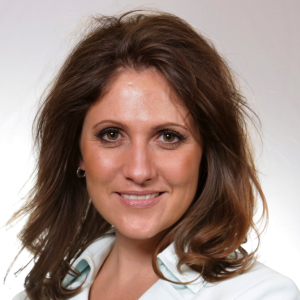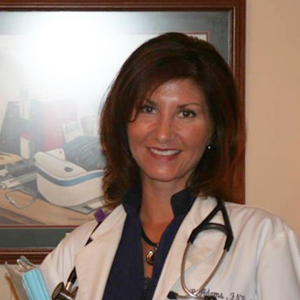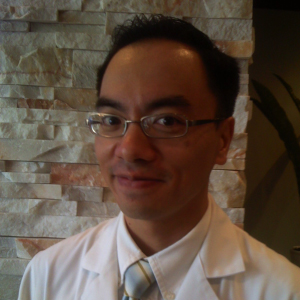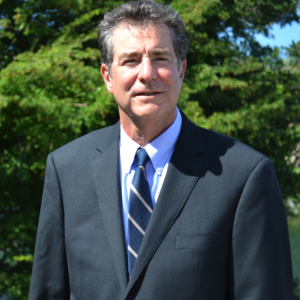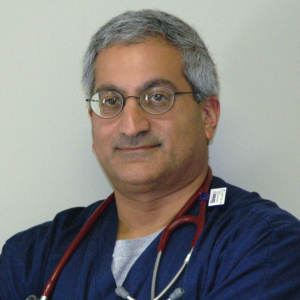Turmeric
by Yusuf M. Saleeby, MD
(to be published in upcoming American Fitness magazine)
Turmeric is a rather popular herbal these days for its touted reputation at knocking down inflammation. We know that inflammation is a major player in everything from heart disease to stroke to cancer. Controlling inflammation for those with high levels, will yield improvements in their quality of life. When we think inflammation we often think of painful joints, but inflammation goes way beyond these observable and overt symptoms. Inflammation (the silent type) has been implicated in heart disease, cancer, dementia (Alzheimer’s disease), diabetes and many other disorders. Treating inflammation naturally with turmeric makes a lot of sense. There is evidence abound that this natural and relatively safe therapy works.
Turmeric is produced from the rhizamatous herbal Curcuma longa. This plant belongs to the ginger family of plants called Zingiberaceae. There are some 124 species of Curcuma, many used medicinally. Curcuma zedoaria which is the Javanese white turmeric root while having medicinal properties of its own, should not be confused with the C. longa species that we are considering and discussing here. So pick and choose your turmeric wisely. Not only the plant, genus and species, but also the processing and preparation to obtain a high quality, bioavailable, final product achieving highest medicinal value must be considered.
In the 13th chapter of the book Herbal Medicine: Biomolecular and Clinical Aspects. 2nd Edition, Sahdeo Prasad and Bharat Aggarwal discuss the history of the medicinal and culinary use of turmeric dating back some 4000-years. Some three-thousand articles appear in scientific publications over the past 25-years discussing the use of turmeric as a therapeutic in both animal and human studies. While this short article hits some of the highlights, this book has one of the best and in-depth look at turmeric and curcumin that I have found and is quite heavily referenced for credibility. 1,2,3
HISTORY & RESEARCH:
In Ayurvedic medicine turmeric is well established for treating a variety of conditions from respiratory to liver disorders, from rheumatism to diabetic wounds. In traditional Chinese medicine this herbal was used to treat diseases of the gastrointestinal tract. 1,2
There are studies in the peer-reviewed scientific literature since at least 1985 showing benefit in cancer prevention, as an antioxidant, anti-mutagen, reducer of inflammation, having anti-viral, anti-fungal and anti-microbial properties. In vivo human trials also conducted in the mid-1980’s until the present showed positive effects of turmeric against cancer, as an anti-cytotoxic agent, and an agent that protects liver cells (hepatocites). Other studies show its ability to reduce cataracts and showing properties of reduction in serum glucose in diabetics.4,5 Other studies showed neuroprotection, improved healing in wounds and ulcers, as an adjuvant arthritis treatment. There are even reports of positive effects in atherosclerosis and lipid oxidation reduction.5 A Chinese journal even reports positive effects in respiratory disorders and asthma.6
Turmeric is traditionally prescribed for upset stomach (dyspepsia) at about 500 mg four times daily. As an anti-inflammatory for osteoarthritis (OA) the dose is usually different. One study used a specific product called Meriva, (www.phytosomes.info/public/meriva.asp) for a study on arthritis.7
Those suffering from rheumatoid arthritis (RA) have a slightly different maintenance dose. A published report utilized a specific formulation of the turmeric constituent, curcumin (BCM-95®, www.bcm95.com). This proprietary preparation of turmeric is apparently seven-times more bioavailable than the usual commercially available turmeric compounds.8 A 2014 article published on the use of turmeric in a head to head study against a traditional NSAID (ibuprophen/ Motrin®) showed equal or even better reductions in pain and inflammation and lower incidents of adverse events with turmeric.9
Not only the dose, but the preparation is often important with regard to disease and severity of symptoms.10
PRECAUTIONS:
A few precautions should be mentioned with regard to this spice. When Turmeric is consumed in the lower doses associated with food consumption it is relatively safe. However, when used medicinally, larger doses are prescribed and needed to achieve a therapeutic effect. Supplements contain up to 500 mg per tablet or capsule in general and are prescribed to be taken up to four times a day. That is around 2000 mg as a therapeutic dose. Doses this high have the ability to lower blood glucose and blood pressure.11,12 So those on diabetic and BP meds must be careful.
Turmeric also thins the blood and can cause excessive bleeding when paired with other herbals or drugs with similar properties. Caution should also be taken with certain medications that can alter a person’s liver metabolism. Co-administration with agents such as aspirin, warfarin (Coumadin®), non-steroidals and anti-platelet drugs should warrant careful observation and monitoring. Additionally, herbals such as angelica, clove, Danshen, garlic, ginger and Ginkgo biloba, ginseng and willow root can cause bruising and bleeding. A National Institute of Health web site reports concerns of turmeric use and gallbladder disease. Gallstones and bile duct obstruction with turmeric use can worsen.13,14 In pregnancy, turmeric can promote uterine bleeding, so it is not advised in the pregnant and nursing mothers.15
ACTIVE COMPOUNDS:
Turmeric contains over 100 components after intense phytochemical analysis by researchers, but the main root extracts of interest are the volatile oils containing turmerone and the coloring agents called curcuminoids. Volatile oils include d-α-phellandrene, d-sabinene, cinol, borneol, zingiberene, and sesquiterpenes. Curcuminoids consist of demethoxycurcumin, 5’-methoxycurcumin and dihydrocurcumin, all being natural antioxidants and possessing potent pharmacological properties. Turmeric happens to be a good source of the omega-3 fatty acid and αlpha-linolenic acid, both sharing anti-inflammatory and anti-oxidant properties and useful in maintaining health. Some components are beneficial at enhancing the immune system, while others essentially kill cancer cells.16,17,18
PREPARATION:
Before turmeric can be used the rhizomes must be processed. Whether for medicinal use or as a culinary spice, the hard rhizomes are first boiled or steamed in an alkaline environment. Traditionally, in India the process involved earthenware filled with water and the rhizomes and covered with leaves and a layer of cow dung. The ammonia in the cow dung reacts with the turmeric to produce the final product. For obvious hygienic reasons this method today is discouraged, in place of the manure, sodium bicarbonate is used to achieve about a 0.1% alkaline water solution. Boiling lasts between 40-minutes to 6 hours depending on the region and method of preparation. Once in a powder form the coloration remains indefinitely, but the flavor and medicinal potency diminishes with time and sun exposure.1
MEDICINAL USES:
The beneficial effects of turmeric over a 4000-year history were historically achieved through simple dietary intake with food consumption. Health benefits were realized even at low doses, over protracted periods of time. The activities and used in medicine of the golden spice turmeric include antibacterial and antiviral activity, anti-inflammatory, antitumor and antioxidant properties, and for many years in regional traditional medicine it saw heavy use as a digestive system aid.2,3 Turmeric has been shown to exhibit antiseptic properties, cardioprotective, hepatoprotective and nephroprotective effects in contemporary research studies.19 Some believe it to impart radioprotective protections as well.20
In closing, the ubiquitous golden-yellow spice found throughout India in curried dishes has proven itself quite a safe and useful medicinal herbal. When used correctly in the proper form and dose, it can impart healing properties on a wide range of human disorders.
-----
Yusuf M. Saleeby, MD is an integrative age management physician. He has authored a book on Adaptogen Herbs and most recently a chapter in a 2014 publication on Hypothyroidism. He is a regular contributor to American Fitness magazine. He exhausts gentle integrative treatment modalities before the consideration of pharmaceuticals in his clinical practice. For more information visit www.saleeby.net.
Turmeric is helpful in:
Ø Reducing inflammation and pain in arthritis conditions. A clear winner in a recent clinical trial going up against Motrin®.9
Ø Reducing pain and inflammation in Rheumatoid Arthritis.21
Ø Reduces the risk and occurrence of dementia (Alzheimer’s Disease). New studies demonstrate a very useful therapy in preventing neurodegenerative disease.12,22
Ø Reducing cataracts in diabetics.23
Ø Reducing serum glucose levels in those with insulin resistance and diabetes.24
Ø Reducing blood pressure in those with elevated BP (hypertension).25
Ø Improvement in erectile function (ED) in men. More effective and safer than Viagra®.26
©2014
References:
1. Prasad S, Aggarwal BB. Turmeric, the Golden Spice: From Traditional Medicine to Modern Medicine. In: Benzie IFF, Wachtel-Galor S, editors. Herbal Medicine: Biomolecular and Clinical Aspects. 2nd edition. Boca Raton (FL): CRC Press; 2011.
2. Krishnaswamy K. Traditional Indian spices and their health significance. Asia Pac J Clin Nutr. 2008;17 Suppl 1:265-8.
3. Pari L, Tewas D, Eckel J. Role of curcumin in health and disease. Arch Physiol Biochem.2008;114(2):127-49.
4. Miyakoshi M, Yamaguchi Y, Takagaki R. et al. Hepatoprotective effect of sesquiterpenes in turmeric. Biofactors. 2004;21:167–70.
5. Araújo CC, Leon LL. Biological activities of Curcuma longa L., Mem Inst Oswaldo Cruz. 2001 Jul;96(5):723-8.
6. Li C, Li L, Luo J, Huang N. [Effect of turmeric volatile oil on the respiratory tract]. Zhongguo Zhong Yao Za Zhi. 1998 Oct;23(10):624-5.
7. Belcaro G, Cesarone MR, Dugall M, et al. Efficacy and safety of Meriva, a curcumin-phosphatidylcholine complex, during extended administration in osteoarthritis patients. Alt Med Rev, 2010:15:337-4.
8. Antony B, Merina B, Iyer V S, Judy N, Lennertz K, Joyal S. A pilot cross-over study to evaluate human oral bioavailability of BCM-95® CG (BiocurcumaxTM), a novel bioenhanced preparation of curcumin . Indian J Pharm Sci, 2008;70:445-9.
9. Kuptniratsaikul V, Dajpratham P, Taechaarpornkul W, Buntragulpoontawee M, Lukkanapichonchut P, Chootip C, Saengsuwan J, Tantayakom K, Laongpech S. Efficacy and safety of Curcuma domestica extracts compared with ibuprofen in patients with knee osteoarthritis: a multicenter study. Clin Interv Aging. 2014 Mar 20;9:451-8.
10. Jäger R, Lowery RP, Calvanese AV, Joy JM, Purpura M, Wilson JM. Comparative absorption of curcumin formulations. Nutr J., 2014 Jan 24;13:11.
11. Chuengsamarn S, Rattanamongkolgul S, Luechapudiporn R, Phisalaphong C, Jirawatnotai S. Curcumin extract for prevention of type 2 diabetes. Diabetes Care. 2012 Nov;35(11):2121-7.
12. Ringman JM, Frautschy SA, Cole GM, Masterman DL, Cummings JL. A potential role of the curry spice curcumin in Alzheimer's disease. Curr Alzheimer Res., 2005 Apr;2(2):131-6.
13. Rasyid A, Rahman AR, Jaalam K, Lelo A. Effect of different curcumin dosages on human gall bladder. Asia Pac J Clin Nutr., 2002;11(4):314-8.
14. National Institutes of Health MedlinePlus: Turmeric. http://www.nlm.nih.gov/medlineplus/druginfo/natural/662.html (accessed 8/22/2014)
15. Turmeric. University of Maryland’s Medical Reference Guide. http://umm.edu/health/medical/altmed/herb/turmeric (accessed 8/22/2014)
16. Ruby A. J, Kuttan G, Babu K. D, Rajasekharan K. N, Kuttan R. Anti-tumour and antioxidant activity of natural curcuminoids. Cancer Lett., 1995;94:79–83.
17. Selvam R, Subramanian L, Gayathri R, Angayarkanni N. The anti-oxidant activity of turmeric (Curcuma longa). J Ethnopharmacol., 1995;47:59–67.
18. Ahmed Hamdi OA, Syed Abdul Rahman SN, Awang K, Abdul Wahab N, Looi CY, Thomas NF, Abd Malek SN. Cytotoxic Constituents from the Rhizomes of Curcuma zedoaria. Scientific World Journal, 2014;2014:321943.
19. Gilani AH, Shah AJ, Ghayur MN, Majeed K. Pharmacological basis for the use of turmeric in gastrointestinal and respiratory disorders. Life Sci., 2005 May 13;76(26):3089-105.
20. Araújo MC, Dias FL, Takahashi CS. Potentiation by turmeric and curcumin of gamma-radiation-induced chromosome aberrations in Chinese hamster ovary cells. Teratog Carcinog Mutagen. 1999;19(1):9-18.
21. Chandran B, Goel A. A randomized, pilot study to assess the efficacy and safety of curcumin in patients with active rheumatoid arthritis. Phytother Res., 2012 Nov;26(11):1719-25.
22. Baum L, Lam CW, Cheung SK, et al. Six-month randomized, placebo-controlled, double-blind, pilot clinical trial of curcumin in patients with Alzheimer disease (letter). J Clin Psychopharmacol, 2008;28:110-3.
23. Grama CN, Suryanarayana P, Patil MA, Raghu G, Balakrishna N, Kumar MN, Reddy GB. Efficacy of biodegradable curcumin nanoparticles in delaying cataract in diabetic rat model. PLoS One. 2013 Oct 14;8(10):e78217.
24. Dong-wei Zhang, Min Fu, Si-Hua Gao, and Jun-Li Liu, Curcumin and Diabetes: A Systematic Review, Evidence-Based Complementary and Alternative Medicine, vol. 2013, Article ID 636053.
25. Khajehdehi P, Zanjaninejad B, Aflaki E, Nazarinia M, Azad F, Malekmakan L, Dehghanzadeh GR. Oral supplementation of turmeric decreases proteinuria, hematuria, and systolic blood pressure in patients suffering from relapsing or refractory lupus nephritis: a randomized and placebo-controlled study. J Ren Nutr. 2012 Jan;22(1):50-7.
26. Zaahkouk AM, Abdel Aziz MT, Rezq AM, Atta HM, Fouad HH, Ahmed HH, Sabry D, Yehia MH. Efficacy of a novel water-soluble curcumin derivative versus sildenafil citrate in mediating erectile function. Int J Impot Res. 2014 Aug 7.
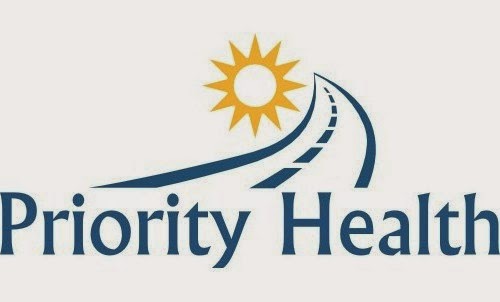



 As you know, the Medical Board’s mission is to protect the public. One of the most important ways it does this is by intervening to protect unsuspecting patients from treatments that are outside accepted standards of care and, at times, risky.
As you know, the Medical Board’s mission is to protect the public. One of the most important ways it does this is by intervening to protect unsuspecting patients from treatments that are outside accepted standards of care and, at times, risky.

